Steroid injections for shoulder pain – why choose an ultrasound-guided injection?
Local steroid injections are widely used for short-term pain relief in many shoulder complaints and help facilitate rehabilitation for patients with shoulder pain.
What shoulder injections do we carry out?
The most common shoulder injections carried out in our London clinics are into the:
- Bursa – more specifically known as the sub-acromial bursa. This is commonly carried out when the bursa (a thin fluid-filled cavity) becomes inflamed and is known as bursitis.
The bursa sits on top of the rotator cuff tendons of the shoulder. Therefore, bursa injections can also be carried out for rotator cuff complaints such as tears and tendinopathy or tendinitis. This most commonly affected tendon is the supraspinatus. - Shoulder joint – this is commonly known as a glenohumeral joint injection and are carried out for frozen shoulder (known as adhesive capsulitis) and arthritis. It is also used if you develop a stiff shoulder after a shoulder operation.
- Long head of biceps sheath – the sheath of the tendon is the structure surrounding the tendon, so the injection does not go into the tendon itself. These injections are used for biceps tendinopathy/tendinitis and tenosynovitis (specifically inflammation of the sheath). These conditions can cause pain at the front of the shoulder.
- Acromioclavicular (AC) joint – this is the joint at the top of the shoulder. AC joint injections are carried out when this joint becomes inflamed due to arthritis or trauma i.e. if you fall on it.
- Suprascapular nerve injection – a nerve block can be carried out for pain relief in certain conditions such as arthritis and frozen shoulder (adhesive capsulitis).
Why do we use ultrasound to guide the injection?
Ultrasound is a safe, effective imaging tool to guide injections to the intended anatomical space/target. It does not emit any radiation unlike X-rays and essentially it uses sound waves to produce an image on the screen.
Ultrasound has the unique advantage of being able to visualise soft tissues, bony landmarks, and the needle with real-time scanning, thereby allowing dynamic visualisation. Ultrasound-guided injections have become more popular because of the recent advances in image quality, decreased cost of use, portability and lack of radiation exposure. These can be carried out safely and effectively in a clinic room and do not need to be performed at a hospital.

Steroid Injections for shoulder bursitis – ultrasound-guided injection
Guided versus unguided ultrasound-guided steroid injections of the shoulder?
Generally speaking unguided injections i.e. shoulder injections that have not been performed using either ultrasound or X-ray (also known as fluoroscopy guidance) are inaccurate. Guided injections use ultrasound, which is what we carry out at Complete, are significantly more accurate and effective. This ensures that the steroid is delivered directly to your painful area to maximise your pain relief.
We will now look at the accuracy of guided versus unguided injections around the shoulder in more detail;
Bursa injections:
Henkus et al (2006) reported that 63% to 76% of unguided SA injections reached the intended target. Eustace et al (1997) reported an accuracy rate of 30% (4 of 14) of unguided bursa injections. In simple terms, this demonstrates that only 3 to 7 out of every 10 injections, without ultrasound guidance, hit the intended target. More concerning is that up to 7 out of 10 injections miss that target if unguided injections are used. However, under ultrasound guidance injections to the bursa have been shown to be 100% accurate
Furthermore, injections isolated to the bursa using ultrasound guidance resulted in significantly decreased pain for the patient following the injection and less pain during the procedure.
Shoulder joint injections:
Eustace et al (1997) reported an accuracy rate of 42% (10 of 24) for glenohumeral joint injections. This demonstrates that approximately 6 of 10 unguided injections miss the joint. There was a positive correlation between how much pain relief the patient experienced following the injection and the accurately placed injections
However, ultrasound-guided injections to the shoulder joint using ultrasound guidance have been shown to be 100% accurate (Finnoff et al, 2015). This means to ensure the maximal effect from a shoulder joint injection it should be carried out with ultrasound guidance.
The long head of biceps injections:
Unguided long head of biceps injections has been shown to reach the intended target only 27% of the time, whereas ultrasound-guided injections are 87% (Hashiuchi et al, 2011). With such a low accuracy rate for unguided injections, all biceps tendon injections should be carried out using ultrasound guidance.
Acromioclavicular (AC) joint injections:
This is one of the most superficial injections carried out, but should still be performed using ultrasound guidance. Acromioclavicular joint injection accuracy varies from 33-72% if carried out unguided (Finnoff et al, 2014) (Figure 1). This indicates up to 70% of injections carried out without ultrasound miss the intended target. However, ultrasound-guided injections to the AC joint have been shown to be 95% accurate.

A large systematic review assessed the efficacy of all shoulder injections and showed a statistically significant greater improvement in shoulder pain and function at 6 weeks after injection, and also had less adverse events (Soh et al, 2011).
As well as accuracy rates, there are other advantages to using ultrasound guidance (Table 1).
Table 1: Advantages of US-guided injections to the patient
| To the patient |
|---|
| Increased accuracy |
| Improved outcomes at 6 weeks |
| Fewer side effects |
| Less unnecessary injections |
| Less procedural pain |
| No radiation |
| Improved patient satisfaction and confidence in the clinician |
| Assessment and injection can be carried out in one appointment |
Other shoulder conditions:
Conclusion
Traditionally, steroid injections for pain arising from joints and tendons would be carried out without using ultrasound guidance. However, due to the growing research demonstrating the inaccuracy of such injections, and the personal experience of our clinicians at Complete, we advocate that all injections are carried out using ultrasound guidance. Ultrasound-guided injections have been shown to improve accuracy and effectiveness compared with unguided injections. This will ensure the patient gets maximal pain relief from the injection.
If you have any questions about this article or are unsure if you require a guided injection please email injections@complete-physio.co.uk.

